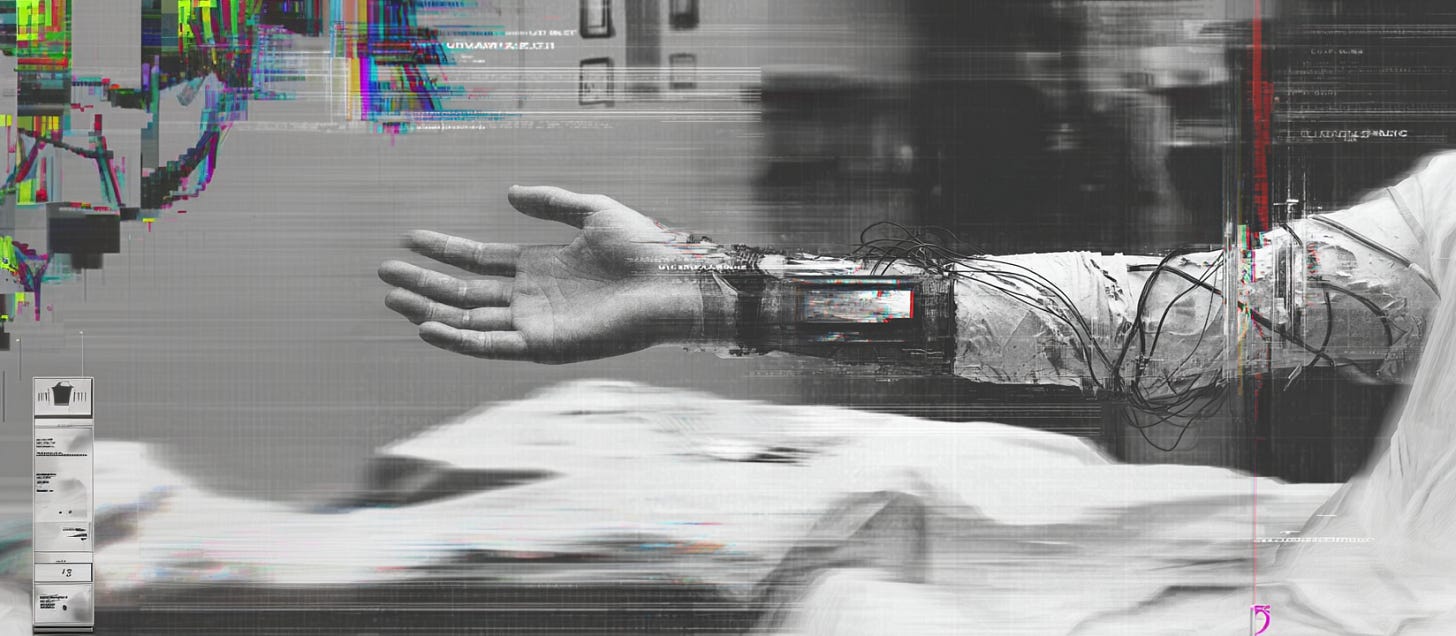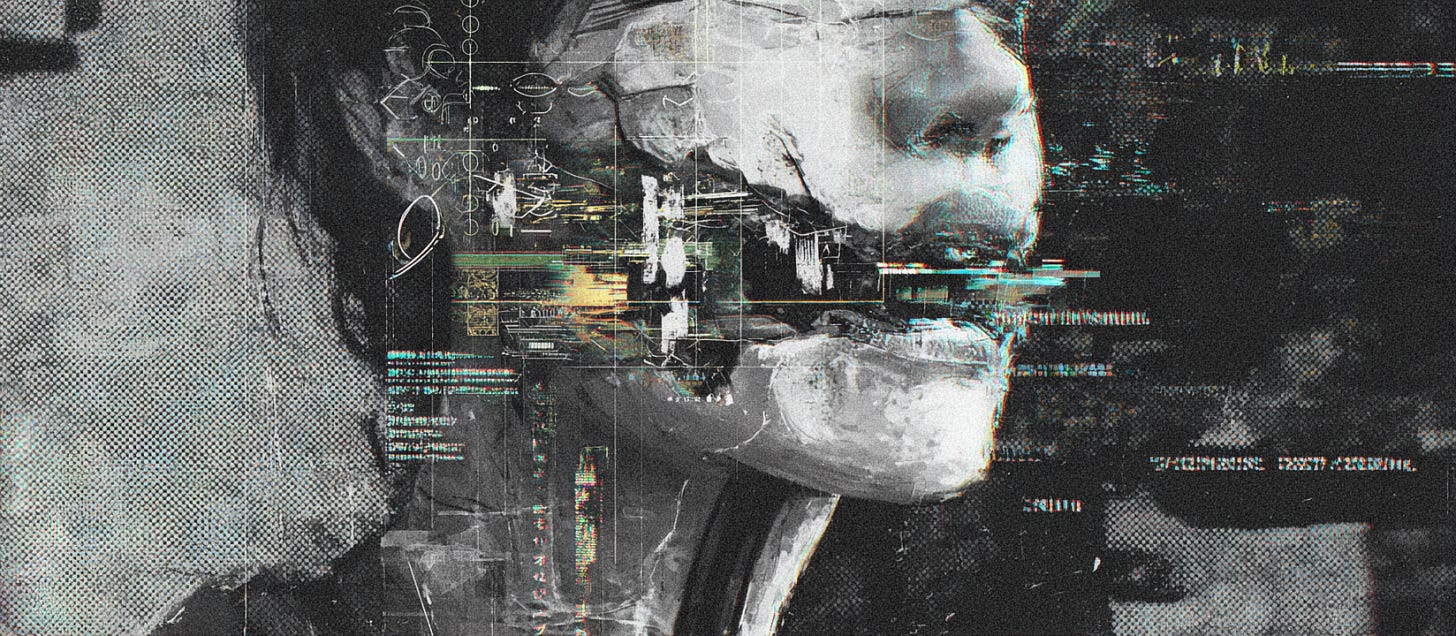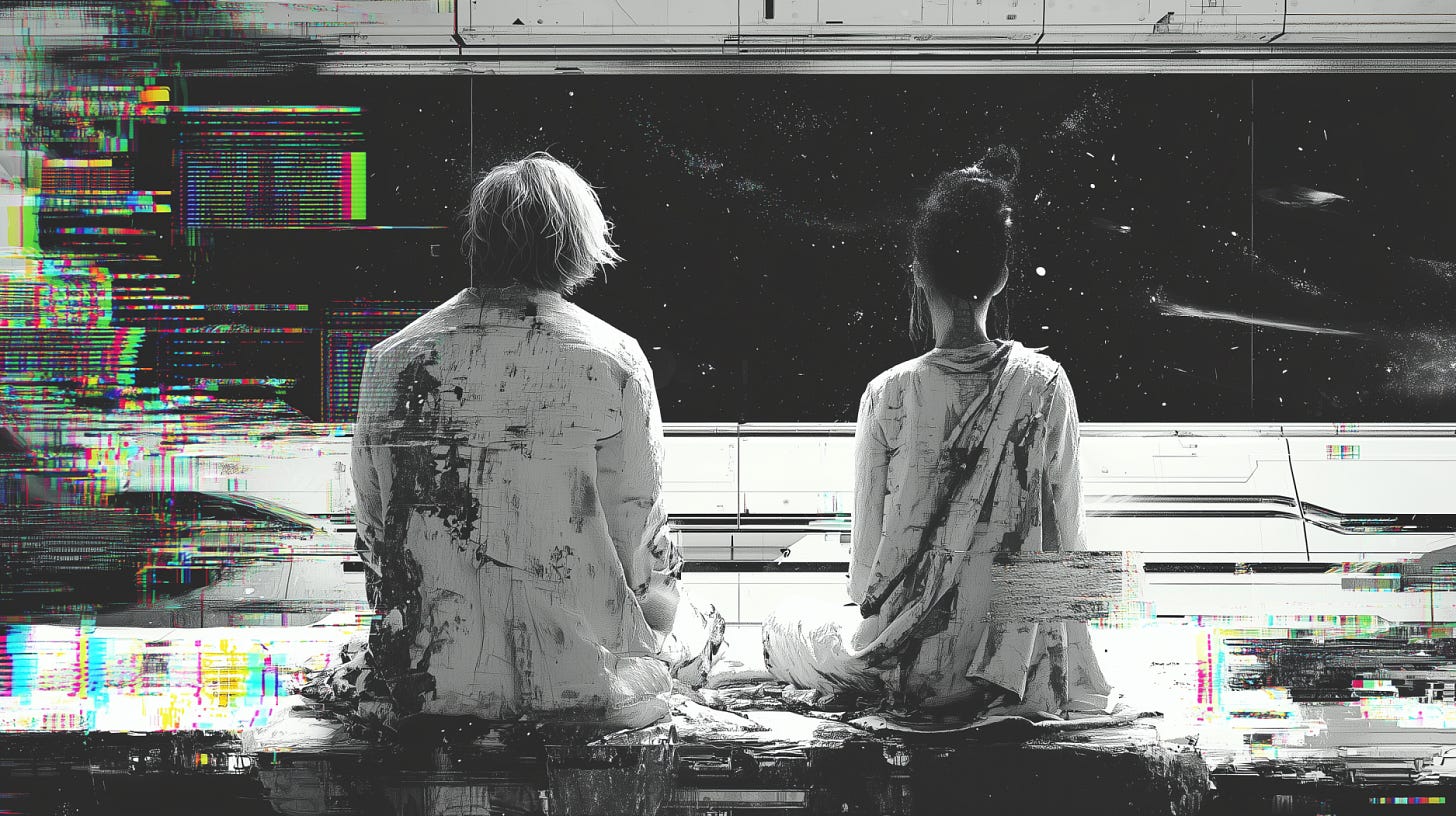The Cyborgs Aren’t Coming
They're Already Here: Design, Identity, and the Already-Cyborg Condition
A Familiar Image
// transmission recievedIt's one of the quieter moments in The Empire Strikes Back.
Luke is laying in the medical bay, draped in white sheets. There’s no blaster fire or whirring buzz of a lightsaber. It’s not the first time we’ve been in a medical bay, but this time feels oddly serene.
A medical droid attends to Luke and Leia smiles at him. It is calm, familial comfort after a major emotional climax. The droid prods prosthetic fingers as they recoil in reflex to the pain response. The bay doors of Luke’s forearm open to expose the inner workings of his new mechanical arm as we hear the quiet orchestration of servo motors and clacking switches (thanks to Ben Burtt’s award-winning sound design—credit where it’s due).
There’s no drama, just a new limb. A new normal.
When I first saw this scene... I was almost unaffected, yet somehow fascinated. The coolness of that integration—to be surgically rebuilt by a robot, and become part-machine in such a seamless way—had this silent effect on me. There was no panic, no question for Luke. Just a new self, in self-reflection—becoming a new version, a new update with the knowledge of his paternal reality: his mechanically altered and masked nemesis was, whether he chose to accept it, his blood. And this kin took his arm—now rebuilt.
We don’t pay much attention to Luke’s prosthesis after this moment. A moment that stayed with me, beneath the skin, and has emerged, however quiet, as important. After familiarizing myself many years later with the voices of cyborg theory, I realize:
All of us are on that bed, in that medical bay—whether we know it or not.
// boot sequence completeA Cyborg I’m Building
I believe in the cyborg, but I’m constantly questioning it.
// system status: ambivalentI don’t know what philosophical ground you stand on as you read this—but I believe firmly that we are cyborgs. And while cyborg theory caught me, hook, line, and spyware—I’m also at odds with it. I question it. My intent with Signal+Static is to dig in further and keep questioning, keep reframing, and keep redefining.
The mission of cyborg writers seems clear: use the image of the cyborg—or the reality of it, as Donna Haraway would argue—as a frame to see and realize our entanglement.
But the edges of the picture are still blurry. The cyborg is not perfect. And I think that’s part of the point.
I acknowledge that language is a technology—and like all technologies, it is constantly in flux. And embodied. It can be reshaped or reprised, used without question, or used with scrutiny.
And throughout the years, I still land on the term “cyborg” even though it can feel a little too science fiction for most folks to swallow.
Maybe it’s my attachment to sci-fi visions and cyberpunk aesthetics. Where the metal meets the meat. It’s so visceral. And the fact that I can almost feel it—that feels more important than I can describe. It can only be felt.
Cyborg as Lived Condition
Here’s the thought I want us to integrate: you don’t need implants to be a cyborg.
The normalcy of our daily interactions with technology—our phones, our near-telepathy-enabling communication stacks—makes incredibly immersive and technologically complex moments feel mundane.
Self-checkout kiosks. Autocorrect. Over-the-counter drugs. Noise-cancelling headphones. Bluetooth. GPS-guided mapping.
// daily patch logThese are just a few of the tools we wear, carry, touch, and respond to every day.
This is the apparatus we are dressed in, and it is growing.
Entanglement as Design Reality
If we’re already cyborgs, then every interaction with technology becomes a negotiation—with tools as prosthetics, systems as collaborators, and power as rule enforcement.
I’ve never loved the term “UX,” or the faceless “user” it implies—but that’s a diatribe for another time. Still, it’s revealing: the word user fuses the person and the tool. What is a user without their apparatus, without something to use?
Cyborg theory gives us a useful concept: negotiated agency. The user isn’t just an actor—they’re being acted upon. Systems push back. By design, they suggest, limit, surveil, and even discipline. Sometimes they are unintentionally abrasive.
That shift reframes the “experience” not as a smoothly-paved one-way street, but as a site of tension—less a product, more a negotiation table.
So who’s sitting at that table? What do they want? How do they make their presence felt?
// input acknowledged → power map rendering...Take the self-checkout, for example. Sure, the shopper needs to scan, weigh, pay, and bag their groceries. But “self”-checkout is a misnomer. Who else is involved? The grocery chain, protecting margins. The credit card companies, extracting fees. Age-verification systems, enforcing policy. Municipal regulations. Produce vendors who dictate how items are indexed. And let’s not forget the machine itself—sensor-driven, impatient, ever-ready to flag “unexpected item in the bagging area,” or to announce to neighboring shoppers you’re about to “weigh your hot, long green peppers.”
What looks like a simple, frictionless interaction is actually a dense web of actors—each with their own motives, limits, and influence.
To design responsibly in a cyborg world is to name these actors, question their power, and decide how—and whether—they belong at the table.
What I Hope to Do Here
After reading, I hope you start to notice the technologies you move through—and that move through you.
Name them. Make them visible. Reclaim them as part of you—not because you chose them, but because you live with them.
And once you’ve named them—ask:
Who designed this?
Who benefits?
Who gets left out?
If you’re a designer, I think this kind of noticing matters. It sharpens your awareness and in doing so makes you a better designer. But really, for any of us, seeing the cyborg in yourself is the first step toward understanding how we live—and how we might live better.
We’re already in the loop. Let’s see what kind of signal we can find in the static.
// end transmissionIllustrations by PL4S7IK. Generated and refined through cyborg collaboration — Midjourney prompting (co-developed with ChatGPT and human directorial chaos), Photoshop layering, Procreate detailing, and plenty of human signal shaping the static.




